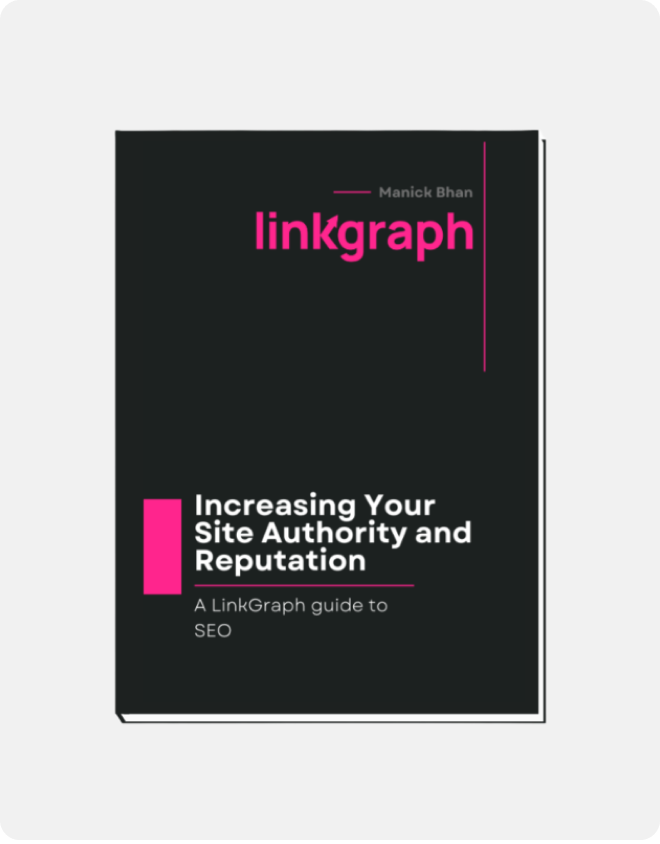Chapter: 01 Introduction to On-Page Optimization
01 Why Site Authority is the #1 Ranking Factor
Over the past 2 decades, Google has indexed almost 130 trillion web pages, but over 90% of those pages don’t appear in the SERPs for a single search query. Google relies on approximately 200 ranking factors to determine which of those trillions of pages to present to users in search results, so understanding the nuances of those factors can mean the difference between your site appearing on page 1 or disappearing into the internet void entirely.

Search engine ranking factors can be separated into two primary types: On-page and off-site. On-page signals provide Google with a comprehensive understanding of what a website is about, but off-site signals tell search engines how websites are perceived by users, industry experts, and other reputable webmasters. Improving your site’s off-site signals helps Google recognize your site’s trustworthiness, reputation, and expertise.
Search engines measure your site’s reputation primarily through backlinks, or links to your site from other domains. Links are a voting mechanism, and every backlink you receive is a “vote” or reference for your site. Sites that are authoritative and reputable have votes that count more. A backlink from a prominent site like The New York Times or the Wall Street Journal communicates to search engines that your content has a lot of value and is trustworthy.
Other off-site factors like third-party reviews on social media or platforms like Yelp and Google My Business, as well as unlinked mentions of your brand name, also show Google that others perceive your site as high-quality.
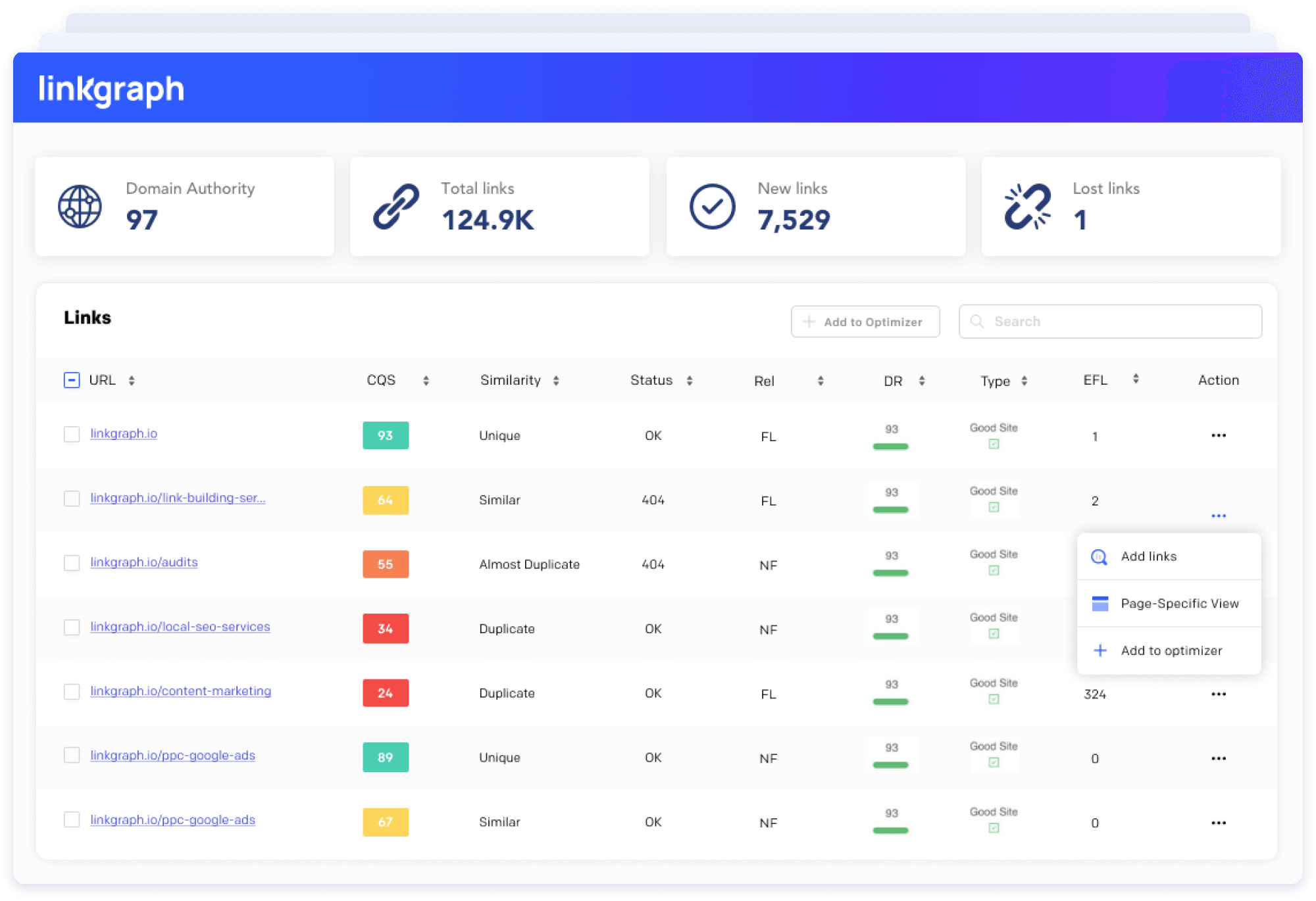
Unlike on-page SEO, off-site signals are, for the most part, out of the webmaster’s control. You can’t choose when, how, or if a site links to yours, references your brand on their site, or talks about your business on social media. But because off-site factors have such a significant impact on whether Google will rank your site, boosting your off-site signals is essential in improving online visibility and driving organic traffic from search.
There are strategic ways to enhance your site authority, and the most effective comes in the form of white-hat link building. By earning quality links on other trustworthy sites, you can improve your site’s reputation in the eyes of users, other webmasters, and search engine crawlers.
The 3 Key Site Authority Signals that Google Measures
Of the multiple off-site factors that Google's algorithm crawls to evaluate your site authority, some play a more vital role in getting on the first page of Google. The below off-site signals are the primary factors that make for high authority, reputable websites. Focusing on improving them can directly translate into your website earning better results in the SERPs.
Backlinks
In every correlation study of search engine ranking factors versus top search results, backlinks are always the #1 greatest predictor of rankings. The more “votes” that your site has (and the more higher-quality sites that those votes come from) the more likely your site will appear on page 1.
But not all backlinks are created equal. Google looks to several different factors to evaluate the quality of the backlinks your site receives.
The more total PageRank a linking site has, the more PageRank and authority it passes on when it links to your site.
The text content of the landing pages that link to your site matters significantly.
The higher the domain authority of the linking site, the more valuable the backlink.
Domain Authority (DA) is a comparative metric created by the company Moz to measure how likely a website is to rank in search results. The score is measured on a 0-100 scale. The higher the domain authority, the more likely a site is to rank.
Technically, your Domain Authority score is not a Google ranking factor. However, many of the metrics that are used to compute DA are similar to the ranking factors that make up Google’s algorithm. DA is not an absolute metric, but the score is helpful for comparative and benchmarking purposes. Making efforts to raise your DA will likely result in more keyword rankings and increased organic traffic. Your site’s DA is a reflection of your site’s overall reputation.
The anchor text is another contextual factor that determines how impactful a link will be.
There’s a dampening factor that makes additional links from the same domain pass less PageRank. More referring domains makes for a healthier backlink profile.
Besides links from publications and online editorials, a natural part of having a strong brand and digital presence is being mentioned in online forums (e.g. Quora, social media sites, etc.)
Branded Traffic / Direct Traffic to your Site
Visitors who go directly to your website or search for it in Google Search are strong quality indicators to Google that your site is reputable and well trusted. Google measures Branded Traffic as the number of people that are searching for your brand via Google each month.
Search engine algorithms use branded and direct traffic as comparative metrics to your competitors. Unlike black hat link building or fake reviews, branded traffic is hard to fake. For this reason it is an effective way to measure your site’s reputation among your industry peers.
Google is able to measure branded traffic through the data it collects in a few ways:

Google Analytics attributes the source and amount of your traffic. It is a very easy way for them to measure your direct traffic.

Google Search looks at the total search volume for search queries containing your brand vs. competitors

Google Chrome allows them to measure people navigating to your site directly in the URL bar.
One easy way to increase Branded Traffic is by having assets on your websites that customers regularly access and utilize. This could be anything from a dashboard or internal platform they can get to by logging in somewhere on your website. This forces them to visit often.
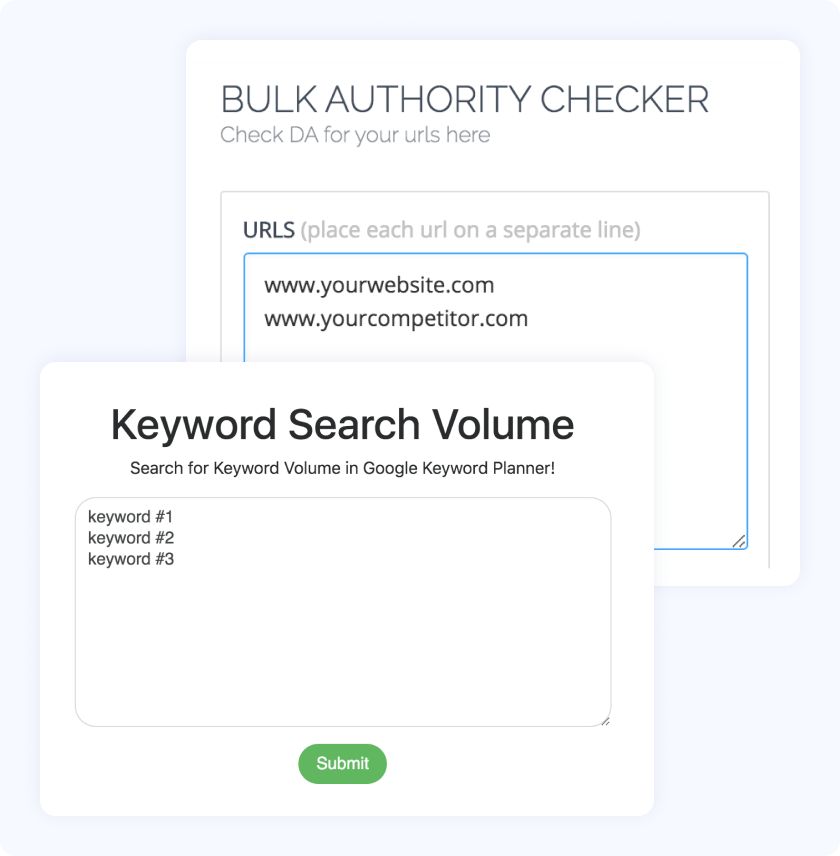
At LinkGraph, we have a software suite of free tools that drive tons of branded traffic to our site. Our Bulk Domain Authority Checker and Keyword Search Volume tool are valuable assets that users come back to utilize again and again.
Some examples of possible assets to drive branded/direct traffic:
- A Learning Center with tutorials and helpful resources
- Unique collections of information that don’t already exist or are hard to find
- Convenient tools or resources that can be used or referenced regularly
Reviews
Reviews are another way that major search engines evaluate the reputation of your site. They are especially important for local businesses that get a lot of traffic from local search and the Map Pack, but we’ve even seen reviews play a meaningful role with rankings for enterprise and corporate clients as well.
The most well-known review sites include Yelp, Google My Business, Trip Advisor, etc. but most industries have their own unique third-party review sites. It’s important for business owners to identify the popular review sites in their industry that compare their products or services to competitors on a regular basis.
In general, review platforms have a natural tendency toward accumulating negative reviews because most people only leave reviews when they’ve had a bad experience. It’s important to counterbalance this by sending your customers with positive experiences towards the review platforms, and incentivizing them if necessary. It’s easier to maintain a 4.5-star or higher average by targeting customers with positive shopping or service experiences.
Other Weaker Off-Page Factors
In comparison to the above off-site SEO signals, the below factors don't carry as much weight in building your site authority, but are still used to determine your site's rank on search engine results pages.
Google has officially indicated that they are consuming APIs from Facebook and Twitter to ingest this information. From our own correlations studies, we have never seen social signals be a strong ranking factor, but collective likes, shares, or overall social media visibility won’t hurt you. Plus, social media platforms can be used to build your brand and strategically get more traffic to your site. If you’re able to use social media effectively, it can be a great way to increase your traffic and brand awareness (and indirectly improve your SEO).
Although email outreach will not play a major factor in your rankings, email campaigns can be great for driving traffic back to your site and raising awareness about your brand and digital assets. Like social signals, it's a good way to promote the valuable content on your web pages that may lead to high quality backlinks in the future.
02 Everything you Need to Know About Link Building
When it comes to improving your site's reputation and your domain authority score, there is no better SEO strategy than high-authority link building. Investing in building a good link profile is one of the best ways to make the most out of your SEO efforts, because nothing else can build trust faster and benefit your site's rankings in the long term than high-quality links.

What is Link Building?
Link building is the process of earning links on other reputable sites to boost your own site authority and reputation. There are a variety of link building strategies that SEO experts use, but at its core, link building is a content marketing strategy. By creating valuable content that other sites will want to link to, you can acquire the quality, relevant links needed to have search engines perceive your site as authoritative.
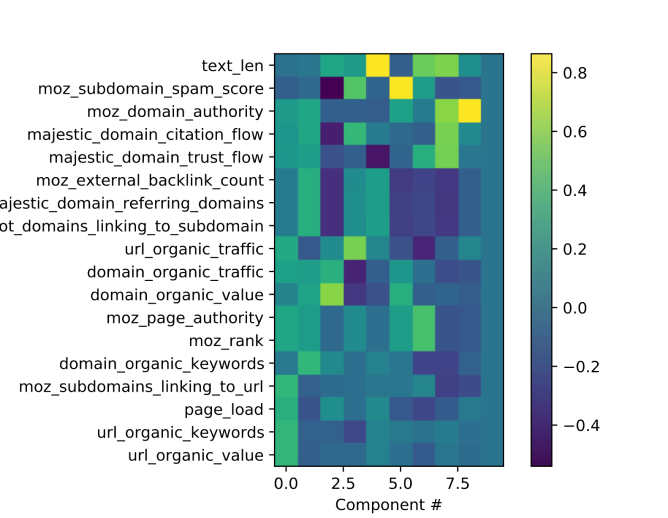
How Important is Link Building as a Google Ranking Signal?
In our correlation studies, site authority (or the strength of a site’s backlink profile) is always the ranking component most correlated with sites that are able to rank on the first page of Google.
For this reason, link building is always a worthwhile investment for websites of all sizes because of its direct impact on rankings. Building your domain authority with quality backlinks takes a lot of hard work, but it is well understood across the SEO community as one of the most important parts of search engine optimization.
Scaling Link Building Campaigns - How Many Links do I Need to Rank?
The number of links you need in your backlink profile depends on your industry and how big your competitors backlink profiles are. Well-established websites with high domain authority often have hundreds, if not thousands, of referring domains. But those sites have also had a lot of time to accumulate the kind of links that build domain authority and secure top keyword rankings for the long haul.
But don’t get discouraged just comparing the number of referring domains. There are plenty of opportunities for newer sites to build links, because webmasters are always looking for new content. Your site can earn authoritative links as long as you’re willing to do the work of content creation.
A little research can help you find the less competitive keywords that your site stands a good chance of ranking for. We created our Organic Difficulty score to better understand how competitive different keywords are. You can use our Keyword Research Tracker to identify smarter, more realistic target keyword opportunities for your own website.
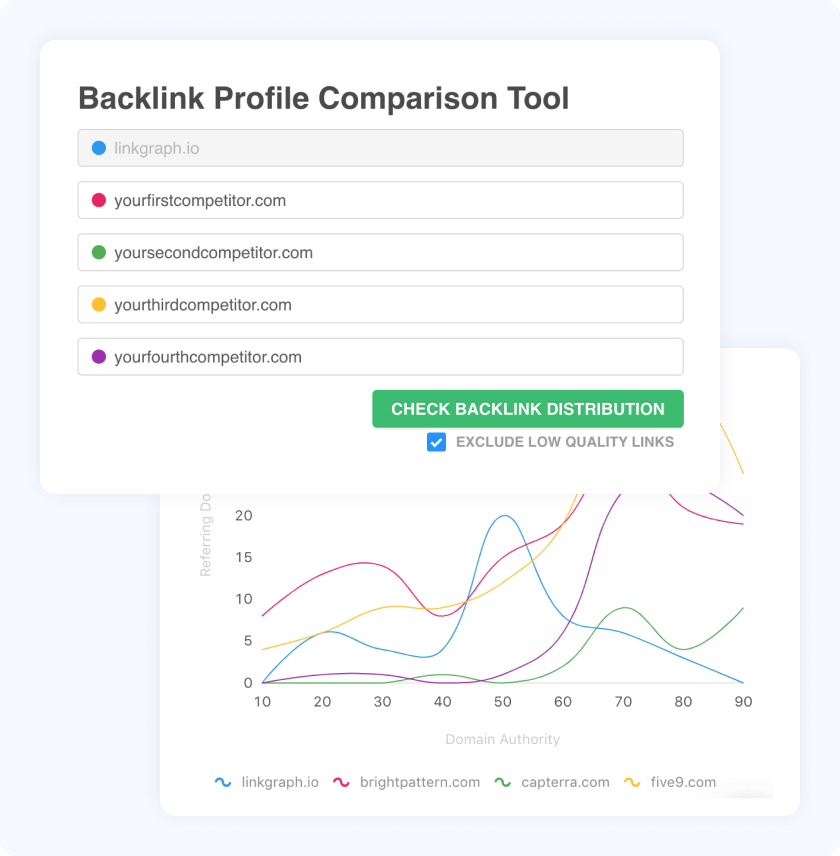
Backlink profile benchmarking is the process of comparing your site to your competitors, and is a great way to understand the number of links your own site needs and from where. For some backlink profiles, 20-30% of the backlinks are from spammy, low-quality domains, from content that’s been syndicated and duplicated, or are just low quality spammy domains regurgitating content. If your link building process results in better links, you may be able to easily surpass your competitors.
Our Backlink Analyzer will help you compare domains and remove the spammy ones. To take a closer look at how your backlink profile measures up against your competitors, use our tool to start your benchmarking process right away.
For local businesses targeting keywords with low Organic Difficulty, 10-20 solid backlinks from quality referring domains can be enough to get decent rankings. For competitive niches like insurance, ecommerce, and high value industries (think Amazon), your most established competitors will have thousands of high quality referring domains that you’ll need to build over the course of a few years. Getting strategic with link building is essential if you ever hope to catch up to them and compete in search.
How to Identify High Quality Sites for Link Building
When it comes to link building, it’s better for your backlinks to come from websites that have strong SEO metrics themselves. Not all links are created equal, and inbound links from the wrong kinds of sites can actually harm your link profile. Google will penalize those websites that appear to be engaging in manipulative or black hat SEO tactics.
When looking for relevant sites for your link building outreach, the key components that make for higher-quality sites include:
- High Domain Authority
- Low Spam Score
- High organic traffic
- Some traffic from social
- Topical or industry relevance to your site
- Healthy backlink profile
- Outlink profile is do-follow and links to a wide range of sites.

Link building has a complex history. In the past, spammers and low-quality sites used black-hat link building techniques to manipulate search engines into perceiving their content as high-quality. As a result, Google’s algorithm updates have often focused on identifying these black-hat techniques and penalizing those sites that choose to employ them.
White-hat link building, however, is a safe way to increase site authority, because it uses Google’s favorite thing -- high quality content -- to improve your site’s reputation.
Some webmasters are hesitant to pursue link building because they have been impacted by some of the lower-quality options. But you get what you pay for. Some websites that try to pay someone on Fiverr to programmatically blast link spam out across hundreds of thousands of sites to build their domain authority fast will be penalized and require remediations that are time-consuming and expensive.
At my SEO agency, we only encourage the best practices of white-hat link building techniques that actually benefit your backlink profile and are at no risk of Google penalties. To learn more about black hat SEO and the link building tactics that you should avoid, you can reference my, “How to Identify and Recover from a Negative SEO Attack” ebook.
03 The LinkGraph Way: Link Building through Outreach
Every SEO and digital marketing agency has their own approach to link building. At LinkGraph, most of our links have in-content placement, contextual relevance, and appear on premier and marquee publications that have strong SEO metrics and high domain authority. Our strategy is effective, scalable, and earns inbound links that produce the best results for your site's overall rankings and authority.

Create Content Worthy of Links
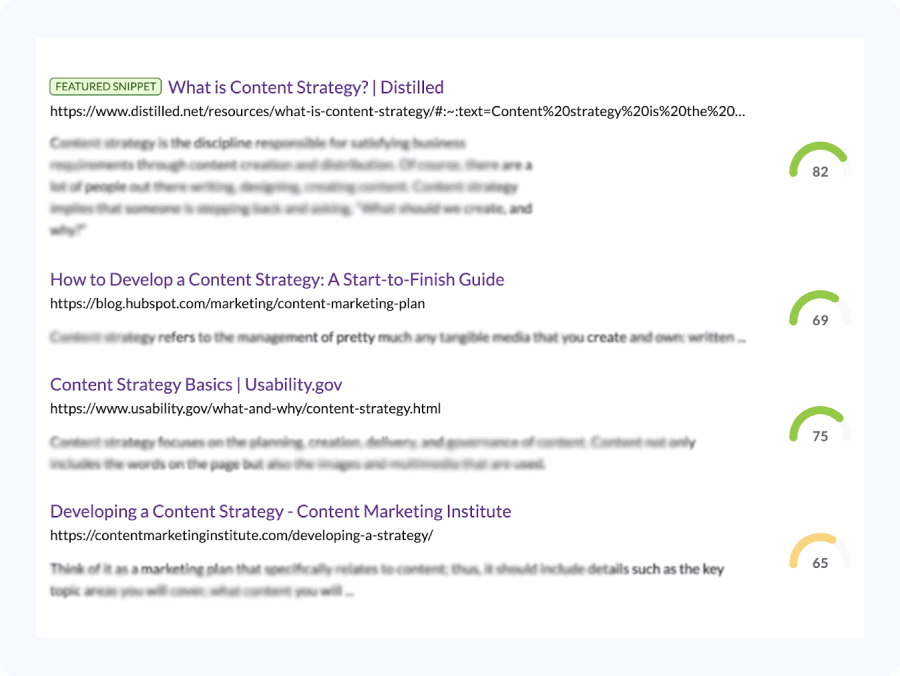
Earning high-quality links requires high-quality content. The better the content you create, the more likely bloggers, journalists, academics, industry-leaders, or other high level webmasters are going to want to link to it. Webmasters are always looking for great content, and the best way to earn links is by creating that content for them.
Although quality may feel subjective, Google's webmaster guidelines are very clear about how they perceive quality. In-depth, long-form, detailed, well-researched, industry-specific, and interactive content that provides a great user experience is more likely to meet the content-quality signals that Google crawls for.
The more content assets that your website has, the more opportunities you have to pitch to webmasters, bloggers, and journalists looking for new content to share with their target audience or readership. Creating valuable content and assets creates a better value proposition for those who are considering linking to you or writing about you on their own site.
Here are some tips to content creators for the key qualities of linkable content:

Webmasters that consistently create great content or have a robust content marketing strategy that meets the best practices of onsite SEO will have an easier time transitioning to scaling up a link building strategy. Generating loads of quality content means far more link building opportunities in the future.
Find Promising Link Prospects
When trying to discover where to earn backlinks from, there is no better strategy than looking to your competitors or to the first page of the SERPs. You can use our software to analyze your competitors' backlink profiles and identify where they are earning their links from. Most likely, those websites fall within your industry niche and are on the hunt for good content. Build a database with that information to identify key link building opportunities for your own website.
With our Toxic Backlink Checker tool, you can compare your backlink distribution with up to four competitors. See their domain authority, number of referring domains, or our suggested targets for possible manual outreach and link building opportunities. You can also use our tool to clean up your link profile and generate disavow text for any spammy links.
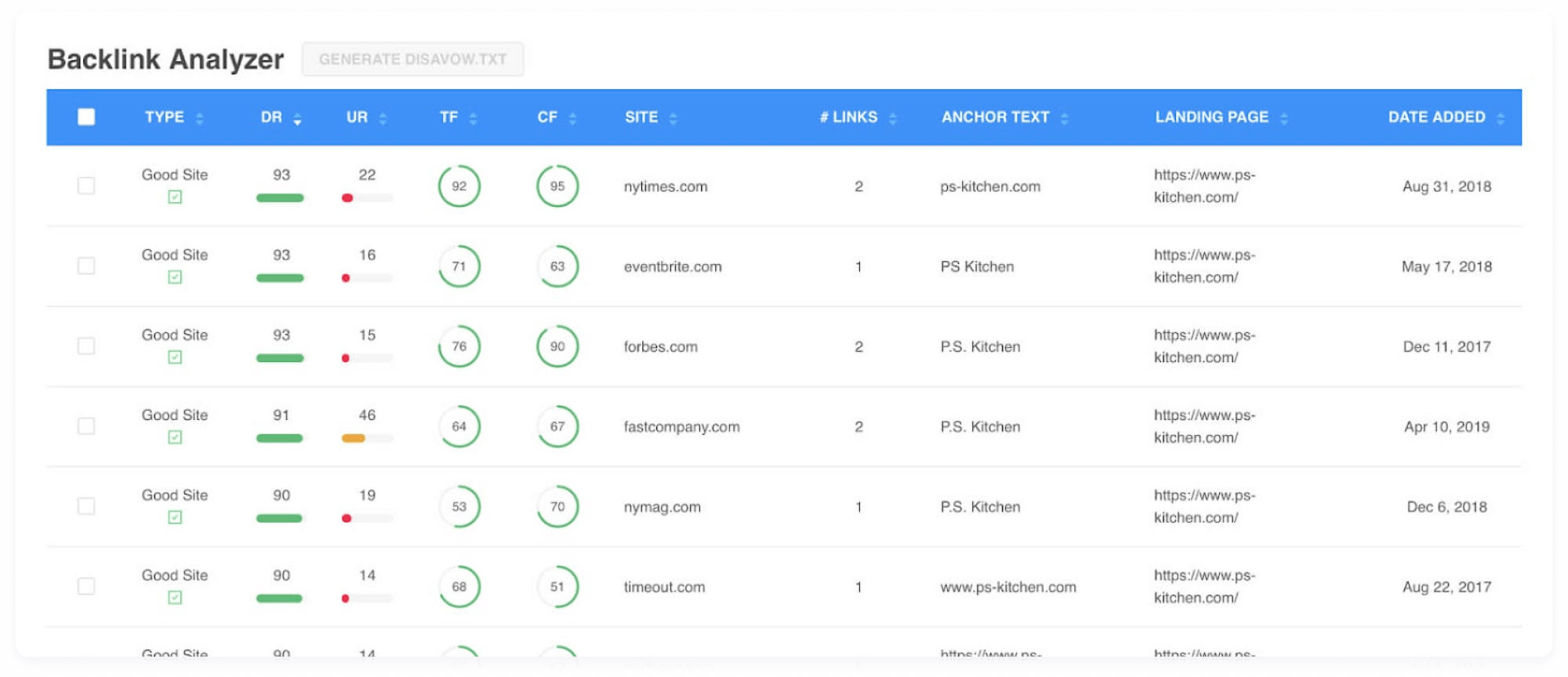

Unlike trying to place a link on any site that you can get to link to you, it's a good idea to focus on the industry-specific publications or websites that have topical relevance to yours. Other link building vendors out there can often get links fast because they are on random blogspots or older blogs that aren’t necessarily directly tied to your industry or don’t get much traffic.
Although it takes a little work, identifying what those high-authority sites in your industry are is a far more effective strategy. It is more likely to get you good links that build your site authority and last for the long term.
Pitch & Place Content
Once you have a database of industry-specific publications that have direct relevance to your site content, you can pitch them your original content through manual outreach. Whether your content is a blog post, a long-form article, a press release or a case study, your pitch should provide good reasons as to why your content will offer their existing audience or potential customers useful, relevant information that enhances their knowledge or experience.
You can find contact information for your target publications on their sites and pitch your content ideas via email. Most publications that accept guest posts or articles have some type of submission page, contributor guidelines, or editorial email address clearly identified somewhere on their website.
As you ramp up your content marketing and manual outreach, you can build relationships with authoritative websites or private blog networks that are always seeking great content. The best link building services have a strong network of premier and marquee publications that they pitch to, providing their clients good links from sites with strong offsite seo and on-page seo metrics themselves. At LinkGraph, all of our original content is optimized for specific search terms, which gives our SEO agency stronger value propositions when we pitch to different sites on behalf of our clients.
Remember the guidelines for what makes an authoritative site: Factors like high DA, high traffic, strong social shares, and an engaged audience. You should only pitch to those sites that will actually help build the site authority for your own website. A good link from a site with high DA is far more valuable than lots of links from spammy, low-quality sites.
04 The Right Way to do Link Building: Our Favorite Strategies
If you search “link building,” on YouTube or Google, you will find a wealth of videos or articles claiming they have the hottest new strategy for earning more links in less time. Although there are many link building tactics, the strategies I include in this ebook are the most effective, long-lasting, and will always be worth your time and effort.

There will always be someone advertising their hack as the faster, better way to get links, but often, those quick-tricks don’t end up securing the best product: High-quality links that actually move the needle on your site authority. Earning higher quality links requires higher levels of effort. As Google’s algorithms continue to advance, the below strategies will remain the most effective and beneficial for building your link profile.
Content Marketing and High-Quality Linkable Assets
Content marketing is an advertising strategy that uses valuable, free content in an effort to earn customers trust and build brand awareness. At its core, link building is a content marketing strategy, and relies on having high-quality assets that other reputable sites want to link to.
Examples of content can range from blogs, landing pages, infographics, maps, tools, long-form articles, ebooks, podcasts, video content, and more, but at the most basic level, all valuable content will enrich the user's knowledge, understanding, or experience. People love useful resources like ebooks, calculators, helpful online utilities and tools, and these assets often rank on Google fairly easily, because useful resources naturally attract backlinks.

or Content Ideas
Journalists and media outlets are always looking for new, fresh content to write about. Pitching content ideas directly to them through press releases, manual outreach, or even social media marketing is a great option for earning more links and brand mentions.
You can even use Facebook or Twitter advertising campaigns to target journalists and lead them to your high-quality, linkable assets. Focusing on those industry-specific journalists and writers who have already shown familiarity with your niche through their clicks and posts saves you a lot of time and legwork. If writers looking for ideas stumble upon your content through advertisements instead of through email pitches, it can be another way to get their attention and find your content idea more enticing.

Having valuable assets that live permanently on your website is another great example of how to use content marketing to earn links. As mentioned earlier, we use tools at LinkGraph to drive a lot of branded and direct traffic to our site, but these types of assets are also very linkable and motivate others to link to us in their content creation.
Regardless of your industry, you need to place a strong focus on content marketing, because it is one of the most cost-effective ways to earn links and build your site authority. Maybe your small business doesn't have the web developers or website design team to create examples like the above, but there are so many types of content that users find valuable. From maps or resource lists, to blogs or article directories, find ways to make your website a great place to keep returning (and linking to) again and again.
Local Citations & Directory Listings
For small businesses, getting your site listed across all business directories and getting local citations is relatively inexpensive (under $100) and is the best option for getting a big boost in local search results on Google Maps. Nearly a third of all mobile searches are location based queries, and local SEO can help search engines better understand your location, the markets you serve, and how customers will reach out to you.
Local SEO is one of the cheapest growth strategies you should try – from a value for your marketing dollars perspective, it tends to be one of the most efficient. For sites with no links, local citations are a great way to start creating trust signals. Not only do they make your site more visible in search, it earns you links back from well-established sites with lots of traffic.
Here are just a few of the popular business directories that you can start earning links from right away. Your industry niche may have its own unique directories, so do the research to identify as many sites as possible that you can earn links from simply by listing business information like your address, phone number, and website.
- Google My Business
- Bing Places
- YellowPages.com
- Yelp
- Foursquare
- Yahoo Local
- Local.com
- Whitepages.com
- Angie’s List
- City Search
- City-Data
- MerchantCircle
- DexKnows
- Chamber of Commerce
Broken Link Building
Broken Link building is the process of searching for broken links on authoritative sites then reaching out to the webmasters linking to the broken page to offer your content as an alternative. The great thing about broken link building is that it provides a stronger value proposition for other webmasters; it helps solve a problem for them by removing the need to search for or create new content for the broken link.
There are a variety of software platforms you can use to find broken link opportunities. Broken link building can take time, but the good news is that it can earn you in-content, authoritative links, without having to do as much content creation, as long as you already have a piece of relevant content to offer.
You can also create an entirely new piece of content to substitute for the broken link, but this is more time consuming, and there is no guarantee that the webmaster will say yes. The harsh reality of blogger outreach and pitching content is that you may get a "no," or more often, no response at all. For this reason, link building services with robust networks of publications and guest post opportunities can usually earn links more quickly as a result of their existing relationships.

Guest Blogging & Contributorships
Guest blogging is another strategy for boosting offsite SEO signals by building brand authority and expertise in your industry niche. Although in-content links are evaluated as higher-quality by search engines, links that appear in guest post attribution can still benefit your link profile and are another type of link worth pursuing.
Guest blogging can help you secure some high authority links that are otherwise very challenging to acquire. As you do your blogger outreach, take notes on the style, content, and main focus areas of the sites you'd like to guest post for. Providing them with high-quality, well-researched articles that appeal to their audience can lead to more opportunities, like the webmaster wanting to feature you again, leading to a wealth of future backlinks for your site.
Developing your personal brand by becoming a thought leader in your industry is very effective for boosting your off-site SEO signals. Industry professionals with specialized knowledge should look for publications in your niche that could benefit from having you write for them. When your industry peers see your name or byline appear on reputable publications, podcasts, YouTube channels and more, they will perceive your name, and the brand associated with your name, as one to listen to and trust.
Value-for-Value Exchanges
Find potential partners in your space where you can trade some kind of collateral, whether it be a link itself, social media exposure, or some type of influencer partnership. In the process of doing that, request that they link back to you.
Value-for-value exchanges can help you build relationships across your industry while promoting your best assets. You could request another webmaster to link to your product or service in a resource list in exchange for you blasting out their latest blog post over your well-followed social media networks. These exchanges can be extremely valuable to your brand and your SEO in the long-term.
But before you offer your best assets to others, make sure you only do value-for-value exchanges with those sites that will help, not harm, your backlink profile.

Press Mentions & Publicity
Brand mentions happen when another site talks about your products or services, and they help boost your site's authority, even if unlinked. But perhaps the simplest of all link-building strategies is turning those mentions into links. It involves simply asking.
In this case, though, you’ll be asking people who clearly already respect or are familiar with your website. Use search engines to find mentions of your company, brand, or website and check to make sure that mentions by writers or bloggers include links to your website. If they don’t, you should send a polite email requesting that they add a link.
Reaching out to journalists for press and social media mentions is a way to get backlinks and grow site authority. You can also sign up for HARO (Help a Reporter Out) to connect with journalists looking for sources or interviews. If you don't have a link building service agency creating the content to pitch for you, offering your expertise or services to journalists is a no-cost option that can help build page authority for your own website.
05 Final Thoughts on Link Building
Before you start planning and executing your link building strategy, have an honest conversation about whether your website is ready, because the answer might be no. That doesn’t mean that you have a bad site, but it might mean that there are some things you could be doing better, whether it’s improving your on-page SEO, providing a higher-performing UI/UX, or increasing your page speed and load times.
In order to improve site authority, you need to have content on your website that is worthy of links. Read my ebook, "The Complete Guide to SEO On-Page Content Optimization”, to make sure you’re executing the best practices of onsite SEO like optimized title tags, meta descriptions, internal links, keyword research and more.

If your website is ready and has multiple valuable content assets right now, then link building through manual outreach is the safest, most effective way to build your site authority, increase your keyword rankings, and improve your organic traffic. Not only is link building outreach Google compliant, links earned through outreach align with what search engines value in the long-term: Valuable content that enhances the user's experience.
If your site is ready for a high-scale link building campaign, LinkGraph specializes in acquiring high-quality, in-content links that appear on websites with high domain authority and contextual relevance to your industry. We have a wide network of publishers who seek out our informative, interactive, and search-engine friendly content. With our award-winning link building services, we've helped hundreds of brands out-rank websites at the top of the SERPs in just a few short months











































































